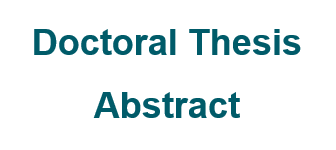Evaluation and use of recently introduced sheep breeds to Uruguay
Doctoral thesis abstract
DOI:
https://doi.org/10.31285/AGRO.28.1559Keywords:
breeds and crossbreed, reproductive performance, wool and meat production, small-scale production systems, economic evaluationAbstract
Sheep numbers in Uruguay have declined over the last 30 years. In the north and northeast there are extensive wool and dual-purpose systems, respectively, where both wool and meat impact on income. In the south, small-scale family sheep meat production systems have flourished. In this thesis I report work pertaning to production systems in the south (1) and northeast (2) regions. Corriedale (C) is the predominant breed in the country. Milchschaf (M) has been disseminated in the south but C still prevails in the northeast. There is a paucity of rigorous evaluations of these breeds or alternatives that could be more profitable, such as Highlander (H) for the south and Dohne Merino (DM) for the northeast. I experimentally assessed: in 1), wool production, reproduction and growth in C, H and M, and in 2), wool quality and body traits in ewe hoggets from rotational crossbreeding between C and DM. In 1), wool production was better in C, but H and M outperformed C in live weight and reproductive performance. In 2), genotypes with greater proportions of DM produced lower fleece weight, and those with greater proportions of C produced coarser fibre diameter, with no differences in wool quality or morphological traits related to meat aptitude. Gross margins (GM) integrate physical performance with product values and costs, allowing monetary comparison between genotypes. I calculated GMs for a number of production and market scenarios. In 1), most often GM was greatest for H, followed by M. The differences in favor of H and M over C decreased when I considered higher feed requirements for H and M. The GM of H and M increased by assuming they were wool-less (the cost of harvesting exceeds the value of the wool produced). In 2), I considered low and high prices for wool of different fibre diameter. GM was greatest for ¾DM and ⅝DM at low prices, and for ¾DM and ½DM at high prices. C had the lowest GM in all scenarios. I recommend H for southern systems and research on hair sheep breeds. In extensive dual-purpose systems, rotational crossbreeding between C and DM allows for improved wool income without losing meat potential. I formulate recommendations about future genotype evaluations, integrating them with current within breed genetic evaluations.
Downloads

Published
How to Cite
Issue
Section
License
Copyright (c) 2024 Agrociencia Uruguay

This work is licensed under a Creative Commons Attribution 4.0 International License.
| Article metrics | |
|---|---|
| Abstract views | |
| Galley vies | |
| PDF Views | |
| HTML views | |
| Other views | |

















